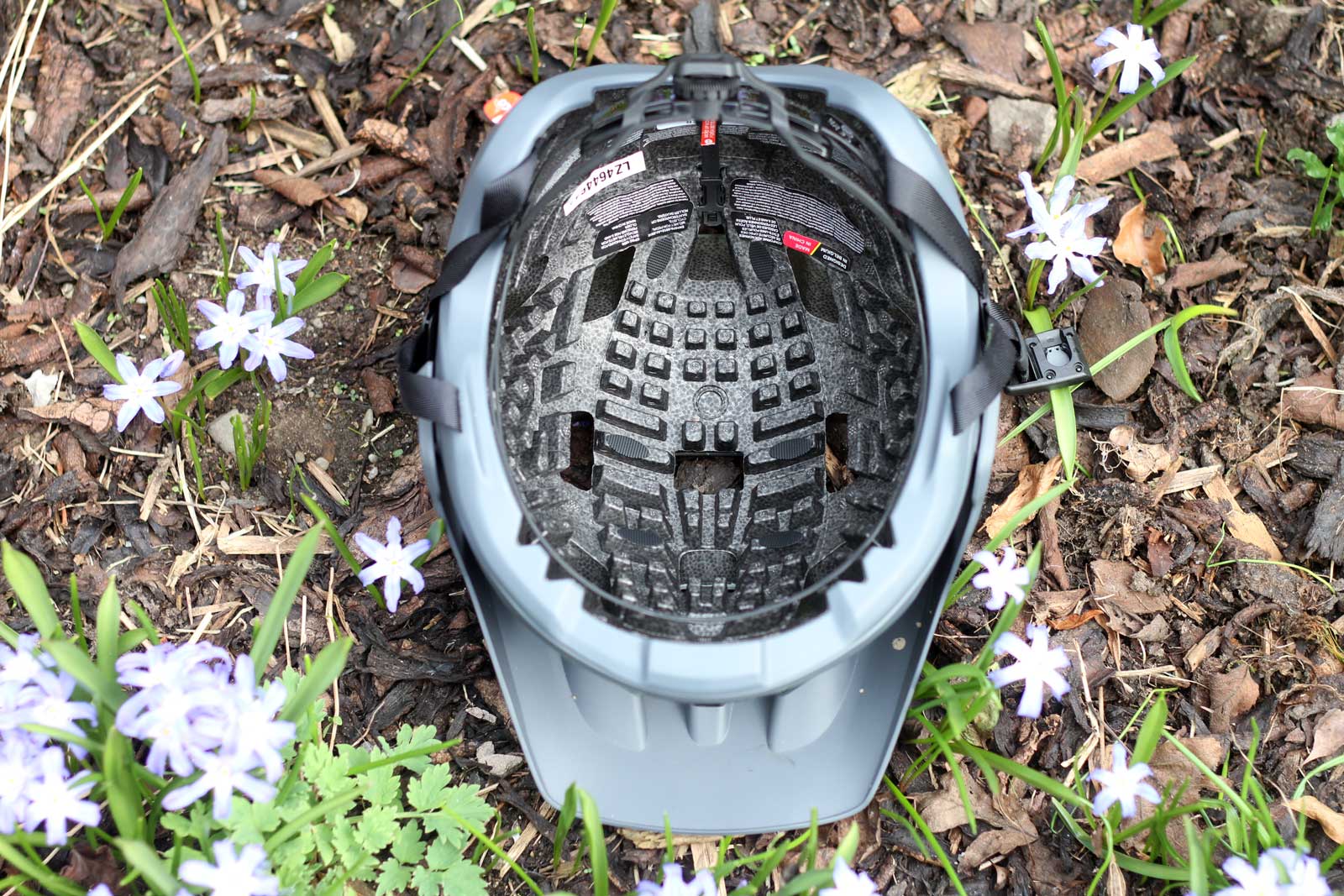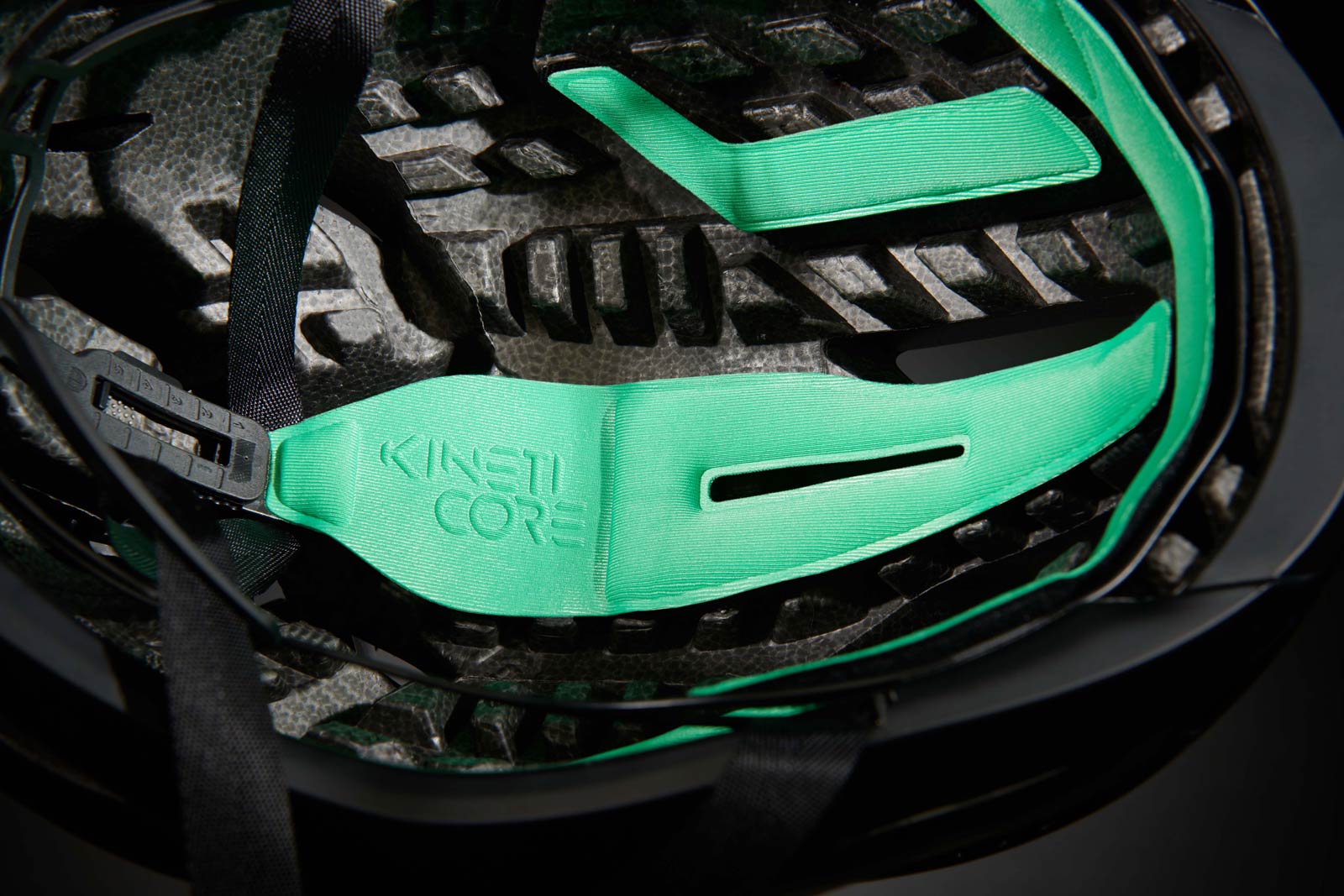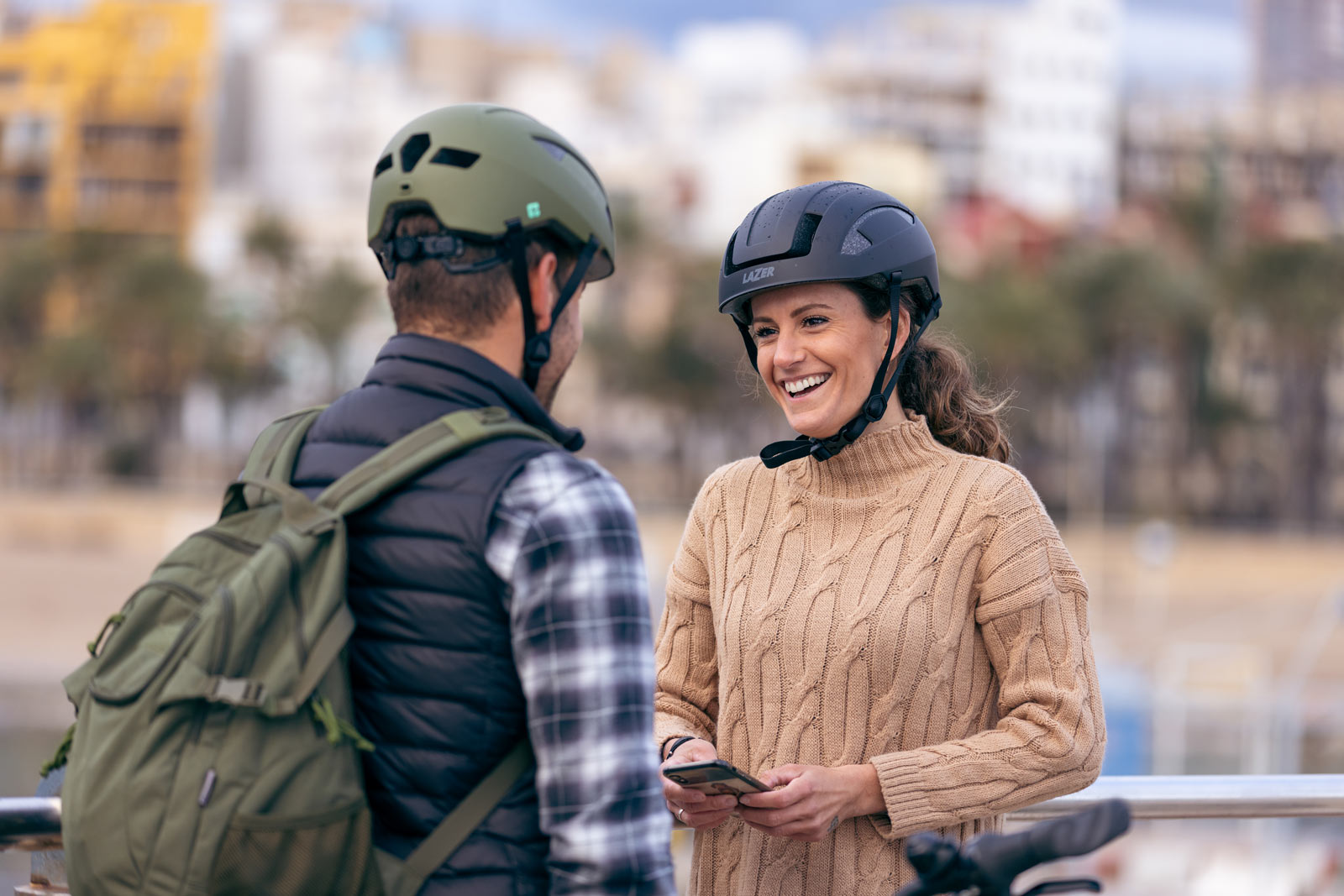Lazer has reignited the conversation around rotational impact protection announcing their proprietary KinetiCore technology that is now an integrated feature of six helmets; the Vento and Strada road helmets, the Jackal mountain bike helmet, the Cityzen commuter helmet and the Nutz and Pnut children’s helmets.
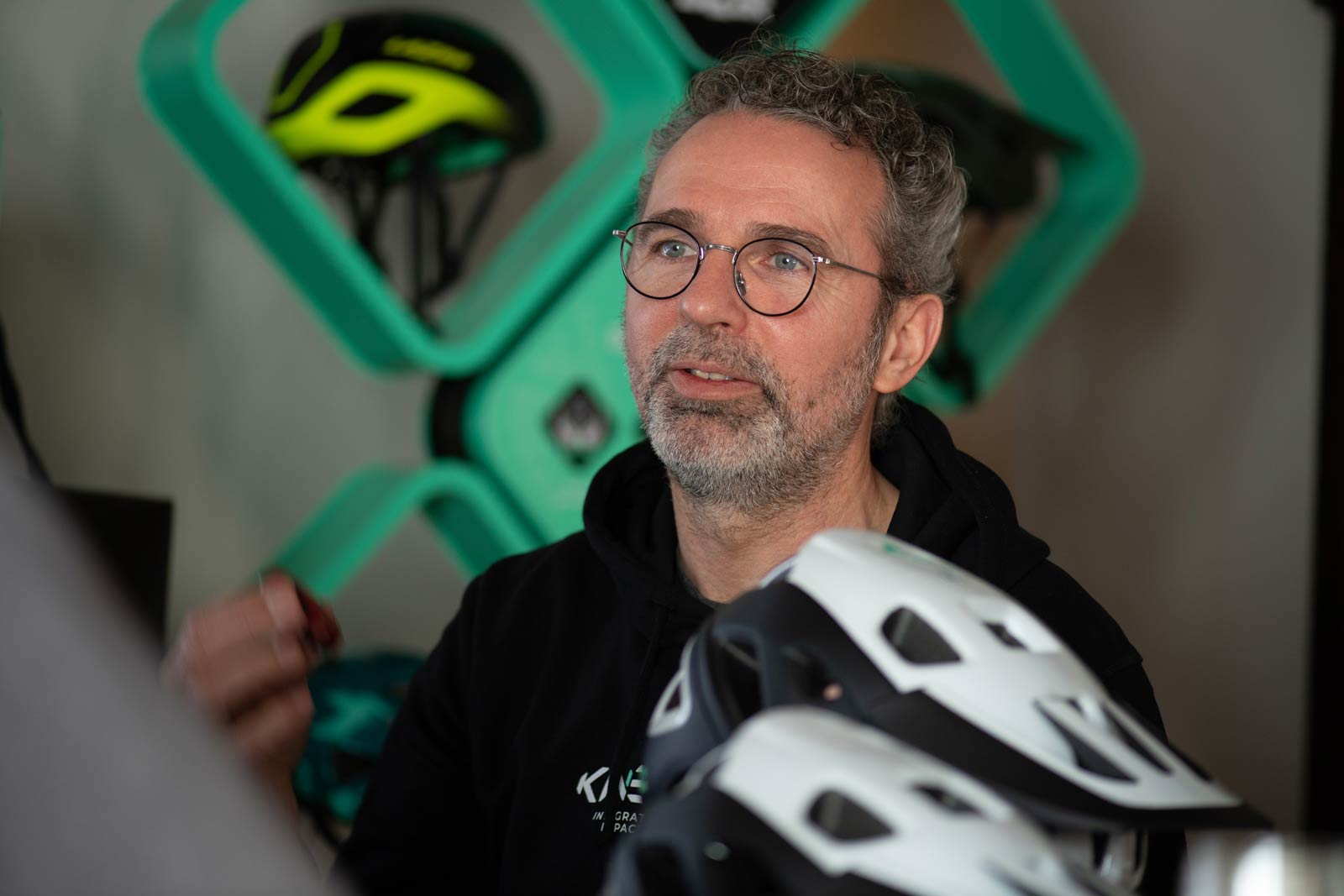
The KinetiCore concept takes a less-is-more approach to helmet design, actually removing EPS in strategic locations in order to create variable size and shape blocks of the energy-absorbing material. The result? The creation of what Lazer terms “controlled crumple zones”, conceptually similar to the crumple zones seen on vehicles. Here we discuss how the technology works and share the results of the Virgina Tech helmet tests.
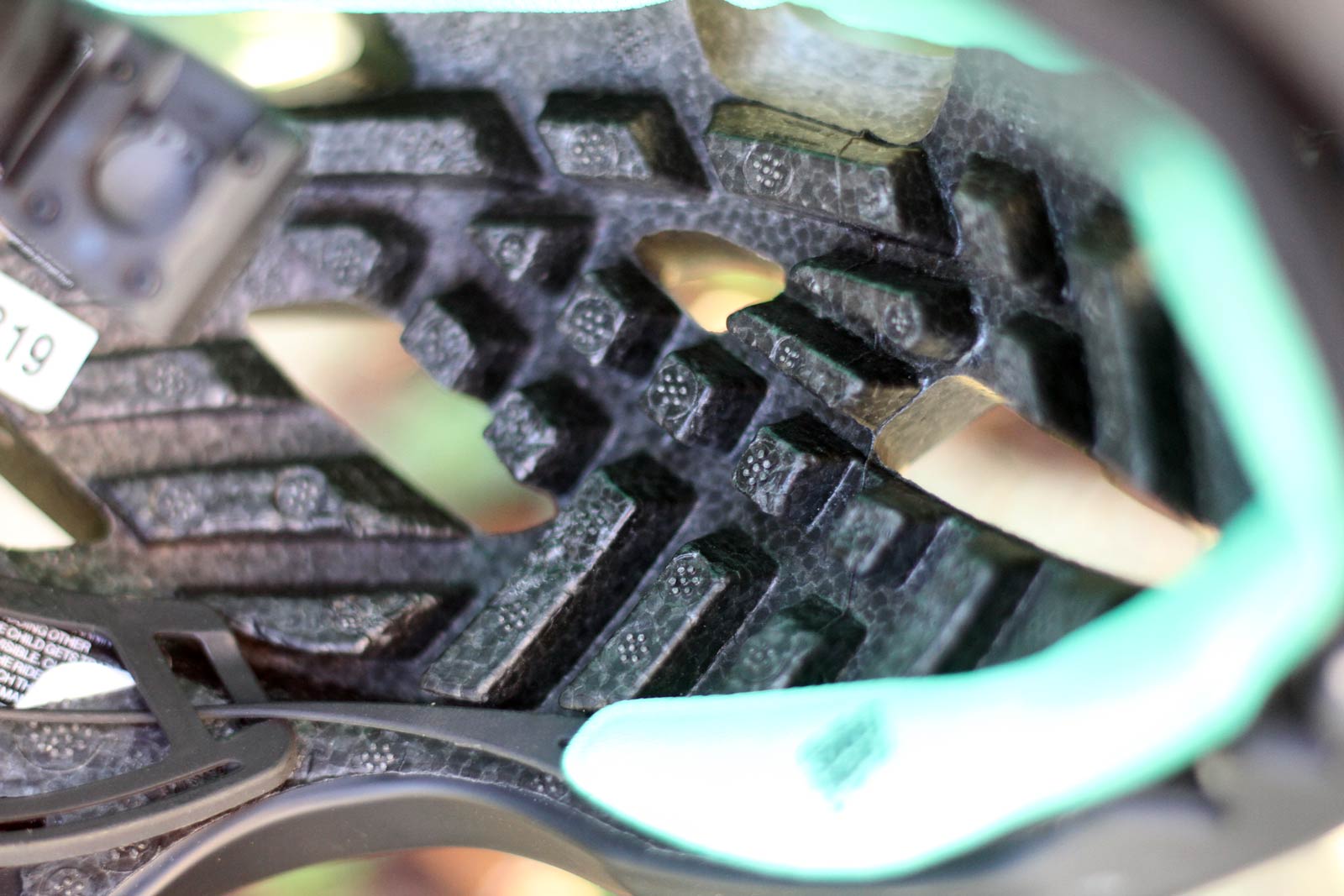
How does Lazer KinetiCore technology work?
By now, most of you will be familiar with the MIPS approach to dealing with rotational impacts. Its now almost ubiquitous use across all cycling disciplines means it would be remiss of me to leave it out of this conversation, and to not compare and contrast it with Lazer’s alternative approach to rotational impact protection; KinetiCore technology.
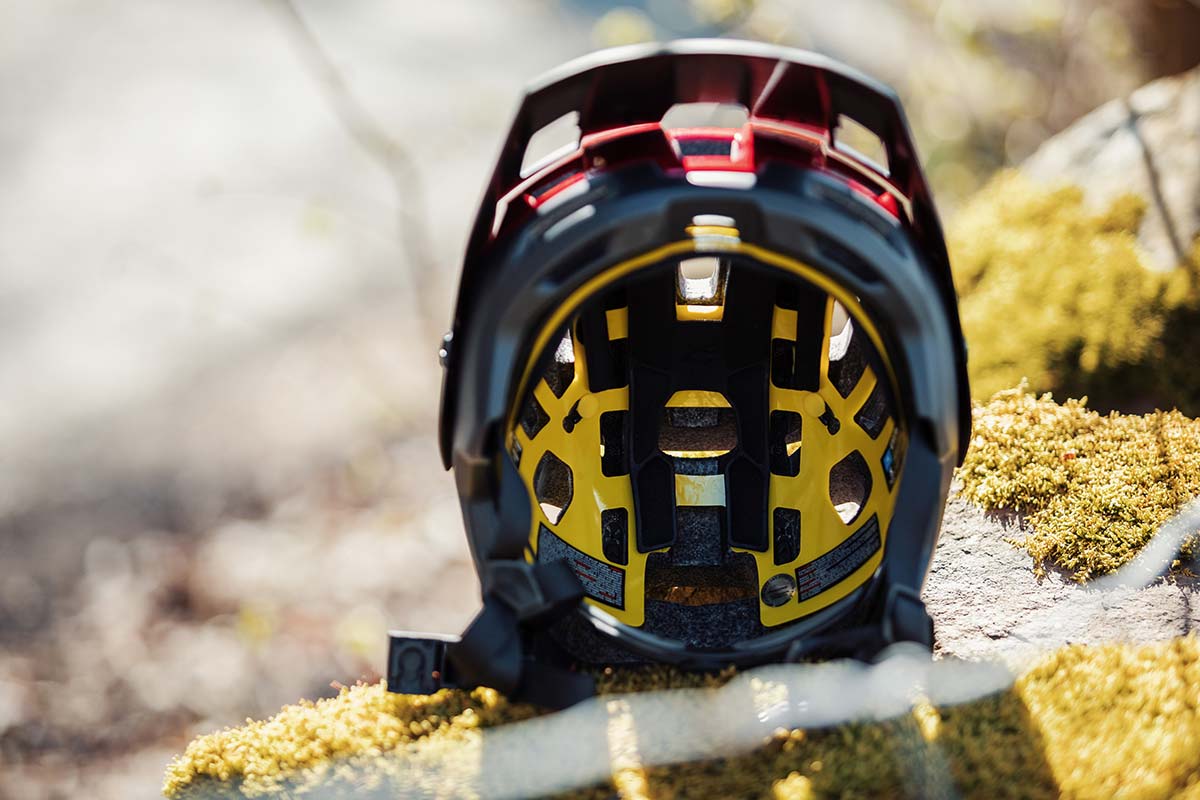
Essentially, a MIPS liner allows a helmet shell to move 10-15mm in any direction independently to the rider’s head by virtue of well-positioned elastomers, reducing the rotational forces experienced by the brain during an impact. The liner is essentially an add-on feature, fixed to the helmet’s retention system for an individualized fit.
There are a few different versions of it, and most helmet manufacturers supply a liner that is tailored to the shape and position of the helmet’s vents, but the hard plastic nature of it does invariably reduce airflow through a given helmet, and of course it does add a bit of extra weight, too – around 30g on the Bluegrass Rogue Core, for example.
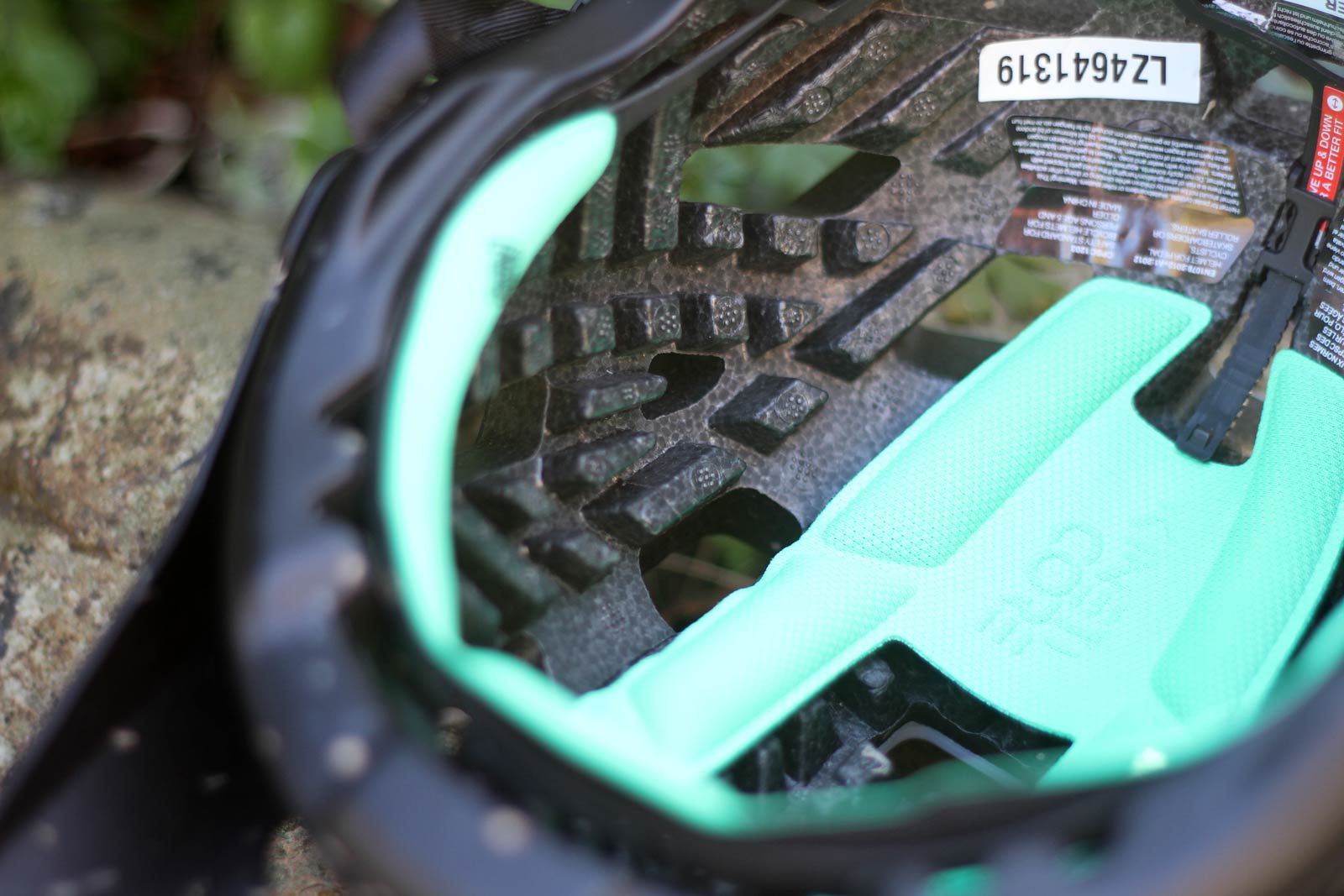
The Lazer KinetiCore technology is said to achieve a comparable result to MIPS in terms of its ability to reduce rotational impact forces, but the mechanism is quite different. During an impact, the blocks of EPS interfacing with the rider’s head are meant to flex laterally and/or crumple down to reduce energy transmitted to the rider’s head in the case of both direct and rotational impacts. The following 3 second clip from Lazer demonstrates how the EPS blocks deform during a rotational impact.
So, the KinetiCore concept does mean there is actually less EPS between the head and the helmet’s outer shell. But, that’s the point. The shape of the blocks, their surface area to volume ratio, and their specific arrangement throughout the helmet come together to make it more effective than a comparable helmet with a traditional layer of EPS of uniform thickness.
The execution of the KinetiCore technology looks quite different across the six different helmets that currently benefit from it. That’s because those aforementioned parameters are optimized to suit each helmet’s shape and intentions.
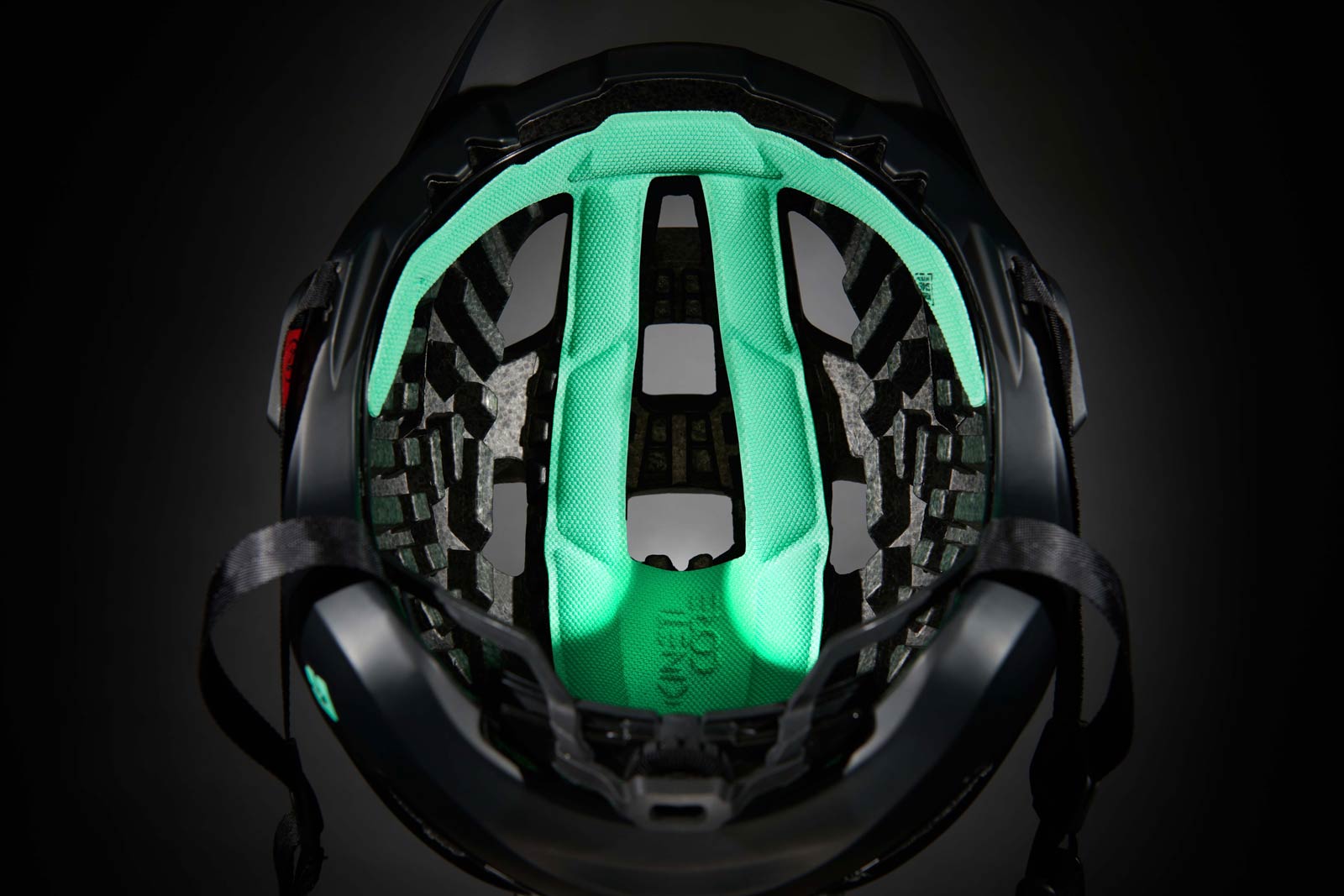
the Lazer Vento, Strada and Jackal KinetiCore helmets were all awarded a 5-Star Safety Rating in Virginia Tech’s independent helmet tests, meaning they fit into the “best available” category. Each helmet is also awarded a score, with a lower value equating to a safer helmet. We’d like to comment on how they fared against their MIPS counterparts but are still waiting to hear back from Lazer on the specific score given to each helmet.
Are there other benefits to KinetiCore?
There are a number of bonus advantages to this less-is-more approach, a key one being the improved ventilation. Taking away EPS opens up extra channels through which air can flow, improving cooling for a less sweaty, more comfortable ride. Lazer tells us the Jackal KinetiCore offers a 5.2% increase in cooling efficiency over the Jackal MIPS.
Of course, less material also means less weight; the Jackal KinetiCore is a claimed 50g lighter than the Jackal MIPS and a claimed 20g lighter than the entry-level Jackal with no rotational impact protection features. Then there’s the reduced plastic usage to think of, too.
Lazer Helmets with KinetiCore
No fewer than six Lazer Helmets are available with the new KinetiCore Technology; 2 Road, 1 Mountain, 1 Commuter and 2 Children’s models (more gravity-oriented options are to follow). Here’s a quick introduction to each of them, along with pricing and availability.
Lazer Nutz KinetiCore Kids Helmet

The Lazer Nutz KinetiCore children’s mountain bike helmet gets the same rotational impact protection as Lazer’s Pro Tour road cycling helmets. The chin strap features an easy-to-access side buckle in a bid to avoid skin pinching scenarios during fastening. Insect nets on the front vents prevent critters getting stuck in places they aren’t welcome.
Compared with the MIPS version of the Lazer Nutz, the KinetiCore model comes in 70g lighter weighing a claimed 250g. This one retails at $49.99 USD and is certified to CE-CPSC and AS safety standards.
Lazer Pnut KinetiCore Toddler Helmet
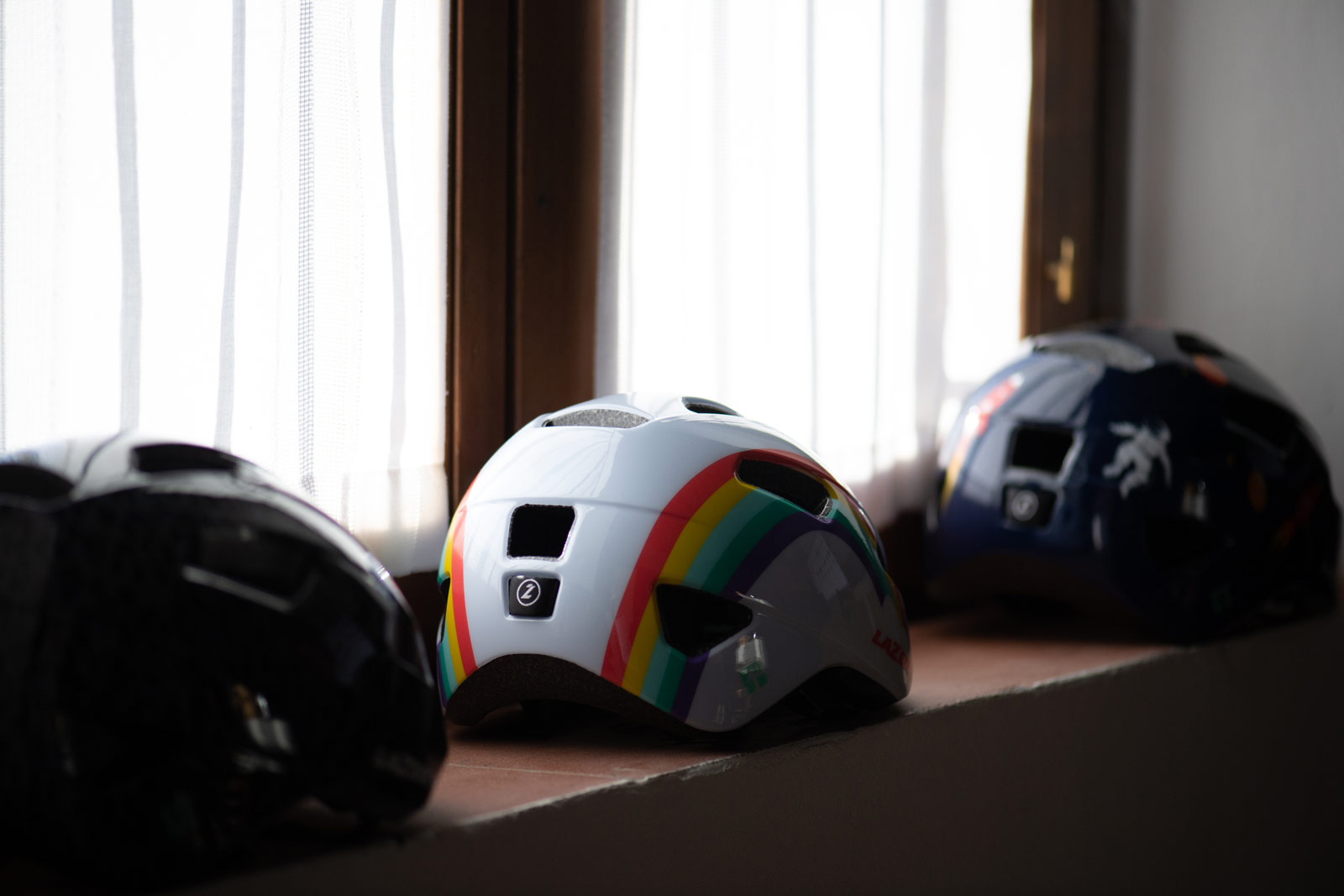
Like the Nutz model, the Lazer Pnut KinetiCore is also for children but is suited to smaller heads (Size XXS). It gets the same user-friendly side buckle and critter-excluding nets over the front vents, but the rear of the helmet is much flatter to make it more baby seat friendly. It basically means the child can sit with their head in a more upright position as it isn’t being pushed forward by the back of the seat quite so much.
This one retails at $49.99 USD and is certified to CE-CPSC (240g) and AS (220g) safety standards.
Lazer CityZen KinetiCore Urban Helmet
The CityZen is Lazer’s latest offering to the commuter contingent and it gets a 4-Star Rating from Virginia Tech. This one features a dual layer of KinetiCore with cylindrical blocks connected to the ABS shell (made from the same material used in police riot shields). Note that the sides of the CityZen aren’t ventilated – they simply feature ABS cut-outs that are said to enhance the helmet’s flexibility in the event of a crash.

The CityZen KinetiCore is available in sizes S-XL, and is certified to CE-CPSC and AS safety standards. The medium weighs a claimed 420g.
Lazer Jackal KinetiCore MTB Helmet
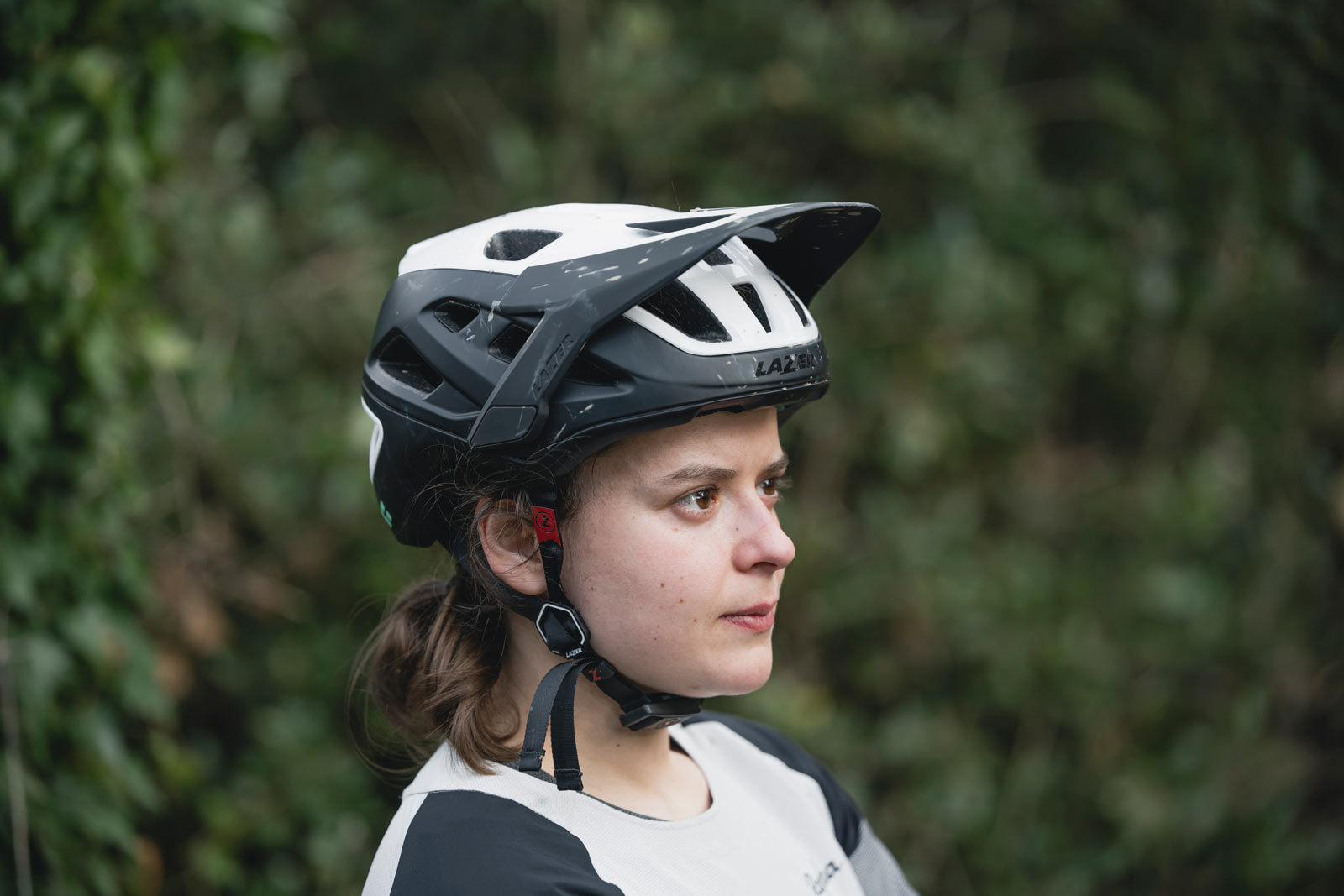
The Jackal KinetiCore is an open-face offering for mountain bikers with deep rear coverage for more comprehensive protection. As well as a mount for the Lazer Universal LED at the rear, this one also features a magnetic Fidlock buckle that is easy to open and close with one hand, and a three-position peak underneath which there is space to store goggles. Read our full review of the Jackal KinetiCore here.
This one is certified to CE-CPSC and AS safety standards and is available in sizes S-XL, retailing at $219.99 USD. Included in that price is a velcro-mounted action camera mount to help riders populate their socials with gnarly POVs.
Lazer Strada KinetiCore Road Helmet
The Lazer Strada KinetiCore is a road cycling helmet said to offer all round performance, rated to 5-Stars by Virginia Tech. The floating head band is said to eliminate potential pressure points from the front of the helmet while the Venturi ventilation system draws air in at strategic locations. Lazer tells us the Strada KinetiCore provides a 0.9% increase in cooling efficiency over the Blade+ MIPS model and it’s 20g lighter.
TPU eyewear docking pads are designed to keep your sunglasses safely stored when not in use, and the retention system is said to be ponytail friendly. Available in sizes S-XL, the Strada KinetiCore is priced at $109.99 USD and is certified to CE-CPSC (290g, M) and AS (300g, M) safety standards.
Lazer Vento KinetiCore Aero Road Helmet
The Vento KinetiCore is the range-topping performance-oriented road cycling helmet optimized for aerodynamics. Like the Strada KinetiCore, this one comes away from the Virginia Tech independent helmet tests with a 5-Star rating. Through a reduction in the frontal surface and limiting drag when the helmet is in a 15 degree sprint position, Lazer says it has increased the aerodynamic performance of the Vento KinetiCore by 2.3% compared to Bullet 2.0 MIPS model.
In addition to boasting a 5.4% improvement in cooling efficiency, the Vento KinetiCore is significantly lighter than the Bullet 2.0 MIPS and the basic Bullet 2.0, weighing a claimed 290g in Medium. This one is available in sizes S-XL and will leave you $299.99 USD out of pocket. There are no fewer than seven colorways to choose from.
Head to the Lazer Sport website for more region-specific information on pricing and availability.
